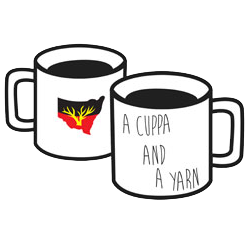
24 September, 2010
New Aboriginal Heritage Regulations Released
Following the recent changes to the heritage provisions of the National Parks and Wildlife Act 1974 (NSW), the new National Parks and Wildlife Regulations have now been published.
Land Councils are advised that new heritage laws and regulations, which include new penalties for the destruction of Aboriginal heritage, are due to come into effect on 1 October 2010. Details of the changes can be found on the NSWALC Culture and Heritage webpage, at www.alc.org.au. NSWALC has developed a short Fact Sheet for LALCs about the changes, which is enclosed.
DECCW have advised that they will be hosting four Information Sessions around NSW in early October about the changes:
Tuesday 12 October 2-4pm, Parramatta Leagues Club 13-15 O'Connell Street, Parramatta
Thursday 14 October 2-4pm, Dubbo RSL Corner Brisbane and Wingewarra Street, Dubbo
Monday 18 October 2-4pm, c.exCoffs Corner Pacific and Vernon Street, Coffs Harbour
Tuesday 26 October 2-4pm, R.B Smith Community Centre 257Crawford Street, Queanbeyan
Negotiations with the NSW Government
NSWALC, in cooperation with NTSCORP, had been negotiating with the NSW Department of Environment, Climate Change and Water (DECCW) and Minister for the Environment, Frank Sartor, for more than 12 months, on improvements to the proposed laws.
Some significant improvements were negotiated to the National Parks and Wildlife Act 1974, earlier this year. NSWALC and NTSCORP also secured some positive amendments to the National Parks and Wildlife Regulations including:
- A list of defined Aboriginal groups listed in the regulations, including LALCs, that must be notified of any projects where an Aboriginal Heritage Impact permit is required (Cl 80C)
- Improvements to the Minimum Standards for Due Diligence Codes of Practice, including better descriptions of Aboriginal objects and how to avoid to avoid damage to other objects, requirement that all Codes must that include a plain English definition of due diligence, advice that proponents encouraged to engage with the Aboriginal community, and a requirement that the proponent look beyond AHIMS to other mapping in some cases, when assessing whether there are any Aboriginal objects in an area.
Overall however, serious concerns remain about some aspects of the new laws, particular the wide nature of the defences where a person has damaged an Aboriginal object, and how the negotiations were conducted. On 14 September 2010 NSWALC and NTSCORP provided a joint press release: " Aboriginal Groups condemn NSW Government's 'bad faith' on heritage negotiations", which is available from the NSWALC website.
What do the new Regulations say?
The new regulations called the National Parks and Wildlife Amendment (Aboriginal Objects and Aboriginal Places) Amendment Regulation 2010. The Regulation outlines how many of the new Aboriginal heritage changes will passed to the National Parks and Wildlife Act in June 2010 will work in practice.
A summary of the Regulations is included in the enclosed Fact Sheet, but in brief the Regulations include:
1. New defences which will be available to a person who harms an Aboriginal object where they did not know it existed without a permit from DECCW including:
- Where a person followed the steps in a prescribed 'due diligence' Codes of Practice.
- Where a person was undertaking a listed 'low impact' activity,
2. Codes of Practice which, if a person follows them, will act as a 'due diligence' defence. These Codes are:
- The generic DECCW Due Diligence Code of Practice for the Protection of Aboriginal Objects in NSW, which anyone can follow, and
- Industry specific Codes of Practice:
- the Plantations and Reafforestation Code (being the Appendix to the Plantations and Reafforestation (Code) Regulation 2001) as in force on 15 June 2010,
- the Private Native Forestry Code of Practice approved by the Minister for Climate Change, Environment and Water and published in the Gazette on 8 February 2008,
- the NSW Minerals Industry Due Diligence Code of Practice for the Protection of Aboriginal Objects published by NSW Minerals Council Ltd and dated 13 September 2010,
- the Aboriginal Objects Due Diligence Code for Plantation Officers Administering the Plantations and Reafforestation (Code) Regulation 2001 published by the Department of Industry and Investment and dated 13 September 2010,
- the Operational Guidelines for Aboriginal Cultural Heritage Management published by Forests NSW and dated 13 September 2010.
3. Activities that are excluded from the definition of 'harm' to an Aboriginal object - including archaeological test activities under the Code of Practice for Archaeological Investigation in NSW.
4. Minimum requirements for Aboriginal community consultation in relation to permits. These reflect the recently released DECCW Aboriginal Cultural Heritage Consultation Requirements for Proponents 2010.
How do I get a copy of the Act and Regulations? The new National Parks and Wildlife Act and Regulations are available to download from the NSWALC website at https://alc.org.au/issues/culture--heritage.aspx, along with recent Network Messages by NSWALC Chair Bev Manton and the Media Release.
Some information is also available from the DECCW website at http://www.environment.nsw.gov.au/legislation/NPWamendmentACT2010.htm.
For more information about this Network Message please contact the Policy and Research Unit on 02 9689 444 or by email on policy@alc.org.au.
Date: 24 September 2010

